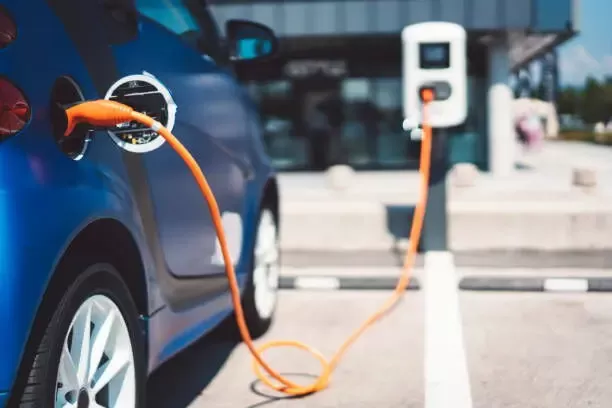Notifications

7 minutes, 14 seconds
-8 Views 0 Comments 0 Likes 0 Reviews

Topper Company is a professional EV charger manufacturer in China, delivering dependable electric vehicle charging stations and comprehensive charging solutions.
As electric vehicles (EVs) rapidly gain popularity, knowing your charging options is key to maximizing your EV experience. One of the fundamental distinctions in EV charging is between AC (Alternating Current) and DC (Direct Current) charging. These two types of electricity deliver power differently and play unique roles in the charging ecosystem.
For most EV drivers—especially those charging at home or work—AC charging remains the preferred, practical choice. In this article, we’ll explore how AC charging works, why it’s ideal for everyday use, and how it compares to DC charging to help you make informed charging decisions.
AC (Alternating Current): The type of electricity supplied by the grid, flowing in a sinusoidal pattern that reverses direction periodically. This is the standard electricity in homes and businesses.
DC (Direct Current): Flows in a single, constant direction and is used by devices with batteries—including EVs. EV batteries operate exclusively on DC power.
When you plug into an AC charger, the alternating current from the grid is converted into direct current inside your vehicle by the onboard charger before it reaches the battery.
In contrast, DC fast chargers bypass the onboard charger and deliver DC power directly to the battery, enabling much faster charging times—but with higher installation costs and potential battery wear.
While DC fast charging is useful for long trips or urgent top-ups, AC charging offers unmatched convenience, affordability, and battery friendliness for daily EV use.
Widely Available
AC charging stations are common at public locations, homes, and workplaces. Even a standard electrical outlet allows slow overnight charging, making it easy to plug in almost anywhere.
Cost-Effective Installation and Operation
AC chargers are simpler and less expensive to install and maintain than DC fast chargers. This makes them ideal for home setups and businesses wanting to offer charging amenities without huge upfront costs.
Better for Battery Health
Frequent DC fast charging can accelerate battery degradation due to heat and electrical stress. AC charging is gentler, helping extend battery life when used for regular recharging.
At Home Overnight: Charge your EV while you sleep using a standard outlet (Level 1) or a dedicated wall box (Level 2), ensuring a full battery every morning.
During Work Hours: Many workplaces offer AC charging, allowing you to top off your battery steadily throughout the day.
While Running Errands: Shopping centers and public parking lots often have AC chargers, perfect for adding range during a few hours of parking.
| Level | Voltage | Range Added per Hour | Typical Use |
|---|---|---|---|
| Level 1 | 120V (standard outlet) | 3–5 miles per hour | Overnight home charging or emergencies |
| Level 2 | 240V (dryer or oven outlet) | 10–60 miles per hour | Daily charging at home or work |
Level 2 chargers offer a popular balance of speed and cost for most EV owners.
| Feature | AC Charging | DC Charging |
|---|---|---|
| Power Source | Alternating current from the grid | Direct current from charging station |
| Conversion | Inside the vehicle (onboard charger) | In the charging station |
| Charging Speed | Slower (Level 1: 3-5 mph, Level 2: 10-60 mph) | Fast (up to 80% charge in 20–45 minutes) |
| Cost | Lower equipment and installation cost | Higher upfront and maintenance costs |
| Battery Impact | Gentler, better for daily use | Can cause faster battery wear if used excessively |
| Best Use Case | Daily charging, overnight use | Long trips, rapid top-ups |
| Availability | Widely available (homes, offices, malls) | Mostly on highways and urban centers |
High Installation Costs: DC fast chargers require heavy-duty infrastructure, making them expensive to install and maintain.
Battery Stress: Fast charging generates heat and electrical strain that may reduce battery longevity over time.
Limited Accessibility: DC chargers are mostly found along highways or in urban areas—not at most homes.
Therefore, DC fast charging is best reserved for road trips or emergencies, while AC charging suits everyday needs.
AC charging continues to evolve with smart technology and sustainable energy integration:
Smart Chargers: Schedule charging during off-peak hours to save on electricity costs.
Renewable Energy Integration: Solar-powered home chargers offer green, emission-free energy.
Connectivity: Wi-Fi and app controls allow remote monitoring and management of charging sessions.
These advancements ensure AC charging remains an essential, practical part of the EV ecosystem.
For daily EV charging, AC charging offers the most practical, affordable, and battery-friendly solution. Whether at home overnight, at work, or while running errands, AC charging keeps your vehicle ready and your battery healthy.
By understanding the benefits of AC charging and how it fits alongside DC fast charging, EV owners can enjoy a smoother, more cost-effective, and sustainable driving experience.
As EV infrastructure and technology advance, AC charging will continue to power the everyday journey toward cleaner, smarter mobility.Know more about Google SEO Directory
China EV Chargers EV Charger Manufacturer EV Charging Solutions

